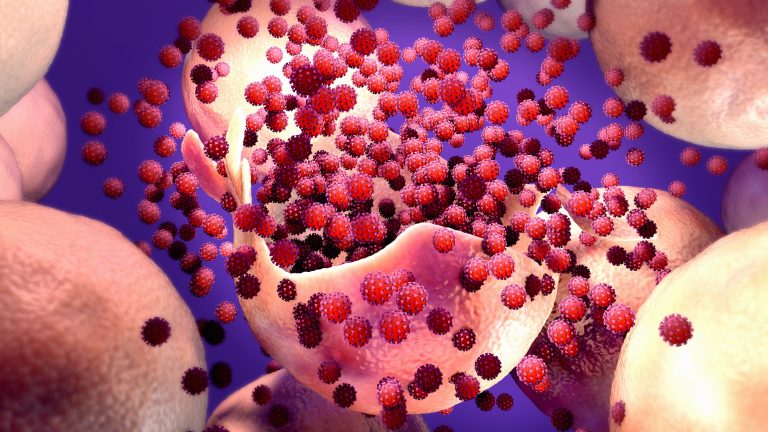
According to new research, the SARS-CoV-2 strain that has become most prevalent around the world achieved this via improved transmissibility and increased replication speed.
A gain in SARS-CoV-2 transmissibility, isn’t good news, but matters could have been worse. The most prevalent SARS-CoV-2 strain might have demonstrated less sensitivity to neutralization by antibody drugs, or a greater tendency to cause severe disease, but neither of these grim possibilities was supported by the study, which appeared November 12 in Science.
Even more encouragingly, the study suggests that the most prevalent SARS-CoV-2 strain, which emerged in Europe, is probably no less susceptible to vaccine-induced immunity than is the strain that originated in China.
The study, titled “SARS-CoV-2 D614G variant exhibits efficient replication ex vivo and transmission in vivo,” presents research from the University of North Carolina (UNC) at Chapel Hill and the University of Wisconsin-Madison. At these institutions, scientists engineered a SARS-CoV-2 variant containing a D614G substitution in the virus’ spike glycoprotein. It is this substitution that distinguishes the most prevalent SARS-CoV-2 strain. Then the scientists conducted a series of experiments in human cells and animal models to compare the engineered variant’s characteristics those of the ancestral form.
“The variant exhibits more efficient infection, replication, and competitive fitness in primary human airway epithelial cells, but maintains similar morphology and in vitro neutralization properties, compared with the ancestral wild-type virus,” the study’s authors wrote. “Infection of human angiotensin-converting enzyme 2 (ACE2) transgenic mice and Syrian hamsters with both viruses resulted in similar viral titers in respiratory tissues and pulmonary disease. However, the D614G variant transmits significantly faster and displayed increased competitive fitness than the wild-type virus in hamsters.”
The scientists also evaluated the neutralization properties of convalescent human serum samples and SARS-CoV-2 neutralizing monoclonal antibodies on the variant and the ancestral form, finding no significant difference.
“The D614G virus outcompetes and outgrows the ancestral strain by about 10-fold and replicates extremely efficiently in primary nasal epithelial cells, which are a potentially important site for person-to-person transmission,” said Ralph S. Baric, PhD, co-corresponding author of the study and a professor of epidemiology at the UNC-Chapel Hill Gillings School of Global Public Health. Bacic, who is also professor of microbiology and immunology at the UNC School of Medicine, has studied coronaviruses for more than three decades and was integral in the development of remdesivir, the first FDA-approved treatment for COVID-19.
Researchers believe the D614G strain of coronavirus dominates because it increases the spike protein’s ability to open cells for the virus to enter. (These crown-like spikes give the coronavirus its name.) The D614G mutation allows the virus to infect cells more efficiently but also appears to alter spike protein conformation, potentially leaving the virus more vulnerable to antibody neutralization.
For the recent study, Baric Lab researchers—including first author Yixuan J. Hou—worked in collaboration with Yoshihiro Kawaoka, Ph.D., and Peter Halfmann, Ph.D., both virologists at the University of Wisconsin-Madison.
“The original spike protein had a ‘D’ at this position, and it was replaced by a ‘G,’” said Kawaoka, a professor at the University of Wisconsin-Madison and the study’s other corresponding author. “Several papers had already described that this mutation makes the protein more functional and more efficient at getting into cells.”
That earlier work, however, relied on a pseudotyped virus that included the receptor-binding protein but was not authentic. Using reverse genetics, Baric’s team replicated a matched pair of mutant SARS-CoV-2 viruses that encoded D or G at position 614 and compared basic property analysis using cell lines, primary human respiratory cells, and mouse and hamster cells.
Kawaoka contributed to the hamster experiments. Hamsters were inoculated with one virus or the other. The next day, eight uninfected hamsters were placed into cages next to infected hamsters. There was a divider between them so they could not touch, but air could pass between the cages.
Researchers began looking for replication of the virus in the uninfected animals on day two. Both viruses passed between animals via airborne transmission, but the timing was different.
With the mutant virus, the researchers saw transmission to six out of eight hamsters within two days, and to all the hamsters by day four. With the original virus, they saw no transmission on day two, though all of the exposed animals were infected by day four.
“We saw that the mutant virus transmits better airborne than the [original] virus, which may explain why this virus dominated in humans,” Kawaoka said.
The researchers also examined the pathology of the two coronavirus strains. Once hamsters were infected, they presented essentially the same viral load and symptoms. (The hamsters with the mutated strain lost slightly more weight while sick.) This suggests that while the mutant virus is much better at infecting hosts, it doesn’t cause significantly worse illness.
Researchers caution that the pathology results may not hold true in human studies.
“SARS-CoV-2 is an entirely new human pathogen and its evolution in human populations is hard to predict,” Baric said. “New variants are continually emerging, like the recently discovered mink SARS-CoV-2 cluster 5 variant in Denmark that also encodes D614G.
“To maximally protect public health,” he stressed, “we must continue to track and understand the consequences of these new mutations on disease severity, transmission, host range, and vulnerability to vaccine-induced immunity.”













